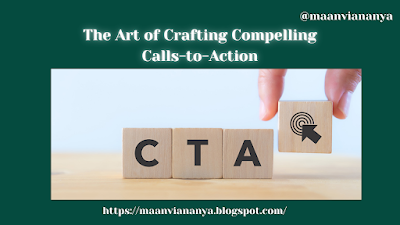In the digital marketplace, the effectiveness of your online content hinges significantly on your ability to prompt readers into action. A compelling call to action (CTA) not only directs user behavior but also accelerates conversion rates, enhancing the overall success of content marketing strategies. This article explores the nuances of creating effective CTAs that drive engagement and conversions by leveraging persuasive writing techniques.
Introduction to Calls to Action
A call to action is a vital element in content marketing that instructs the audience to perform a specific task, such as subscribing to a newsletter, downloading a guide, or purchasing a product. Effective CTAs convert potential customers by clearly stating what actions they need to take next and ensuring these actions are easy to complete.
Key Principles for Effective CTAs
Creating a CTA that resonates and motivates readers involves more than a simple command; it requires a strategic approach:
Clarity and Simplicity
Your CTA should be unmistakably clear. Users should understand exactly what is expected of them. Employ concise and straightforward language that specifies the action, like "Subscribe now," "Download your free eBook," or "Register for the webinar today."
Urgency and Scarcity
Incorporating elements of urgency and scarcity can significantly increase the effectiveness of your CTAs. By creating a sense of limited availability or a time-bound opportunity, you tap into the psychological principle of scarcity, compelling users to act promptly to avoid missing out.
Highlighting Value
A successful CTA clearly communicates the value that the user will gain from taking the action. Instead of merely instructing to "Download," articulate the benefit: "Download the guide to boost your SEO rankings in two weeks!"
Visual Impact
Since CTAs serve as focal points in your content, they must stand out visually. Use design elements like buttons in contrasting colors, sufficient whitespace around the CTA, and large, readable fonts to ensure that it catches the eye.
Testing and Refinement
The effectiveness of CTAs can vary widely based on audience, context, and design. Continuously testing different versions of a CTA (A/B testing) can reveal what resonates best with your audience, allowing you to refine your approach based on real data.
Crafting Persuasive CTAs
Writing a CTA that persuades users to take action requires specific linguistic techniques:
Active Voice: Use an active voice to lend your CTA immediacy and clarity.
Command Verbs: Start your CTA with strong verbs like "Discover," "Join," or "Start" to encourage action.
Emotional Appeal: Words that evoke emotions can make your CTA more compelling. Phrases like "Transform your business today!" or "Start your journey to a healthier you!" connect more deeply with potential customers.
Integrating CTAs into Content Marketing
For CTAs to feel natural and effective, they must seamlessly integrate into your content:
Placement: Position your CTA where it naturally follows the information provided, typically at the end of your content. However, placing a CTA in the middle of a high-engagement section can also be effective.
Relevance: Ensure that the CTA is highly relevant to the content topic. A CTA that aligns well with the user’s interest and the content’s message is more likely to be effective.
Conclusion
Mastering the art of creating compelling calls to action is crucial for maximizing the impact of your content marketing efforts. By understanding the core principles of persuasive CTAs and integrating these strategically across your digital content, you can enhance user engagement, drive conversions, and ultimately, achieve your business objectives more effectively. As you refine your approach and tailor your CTAs to your audience's needs and preferences, you'll build a more compelling, conversion-optimized content strategy.
Maanvi Ananya
Crafting Words that Spark Digital Wonders
📚 Creative Content Maestro | 🌐 Digital Marketing Visionary
🔗: www.linkedin.com/in/maanvi-contentwriter
✍️:https://maanviananya.blogspot.com/
Let's connect the dots between storytelling and strategy for
unforgettable digital experience





No comments:
Post a Comment